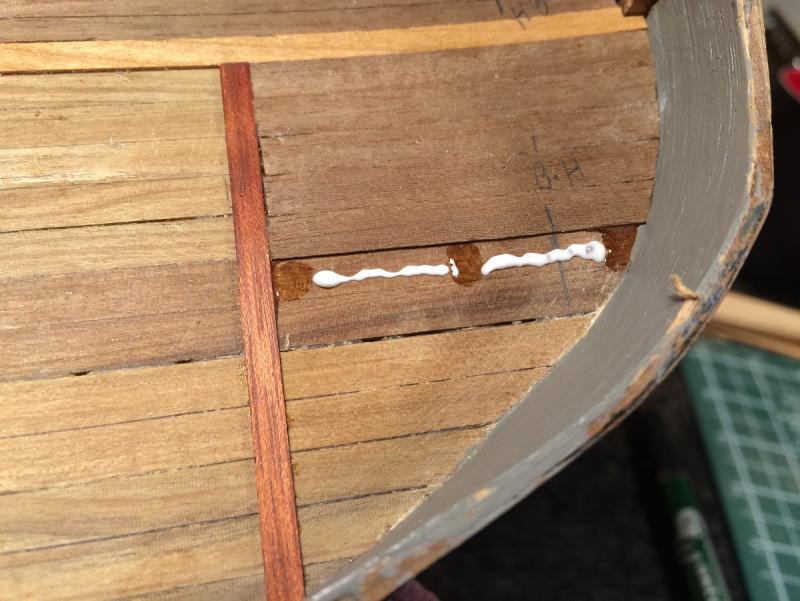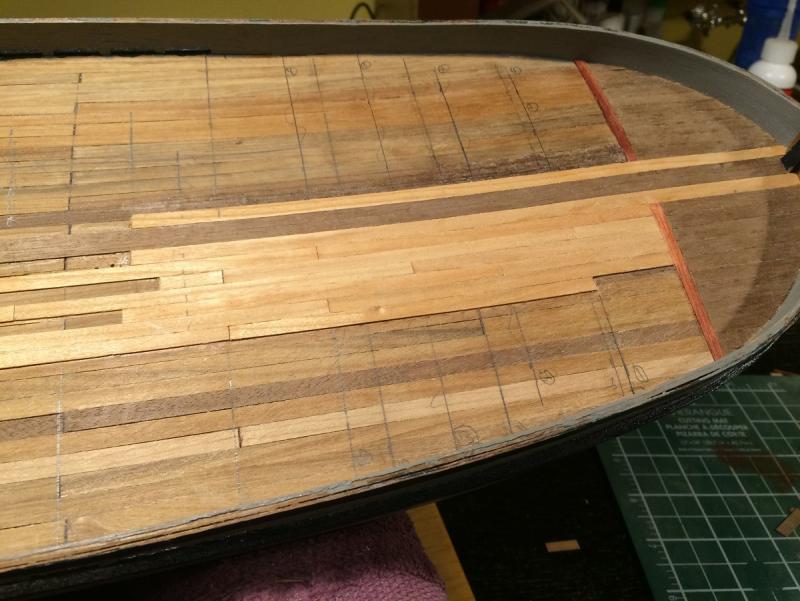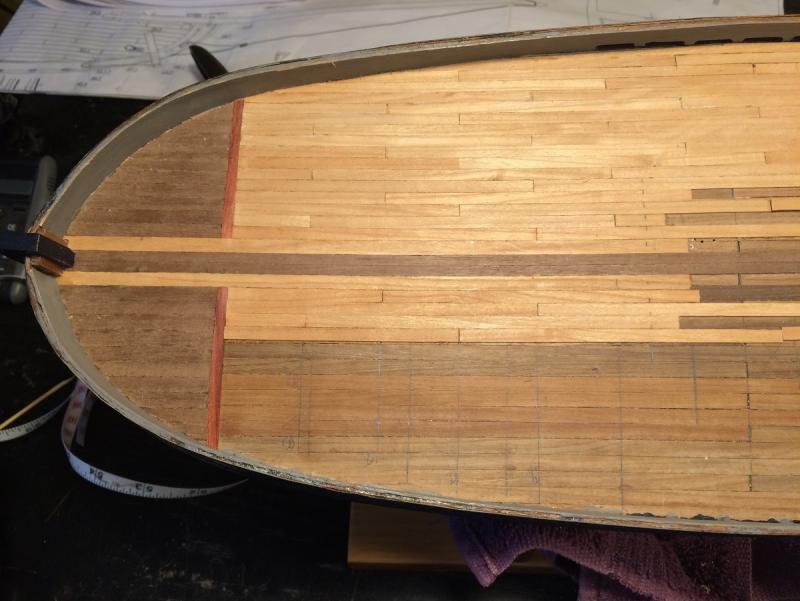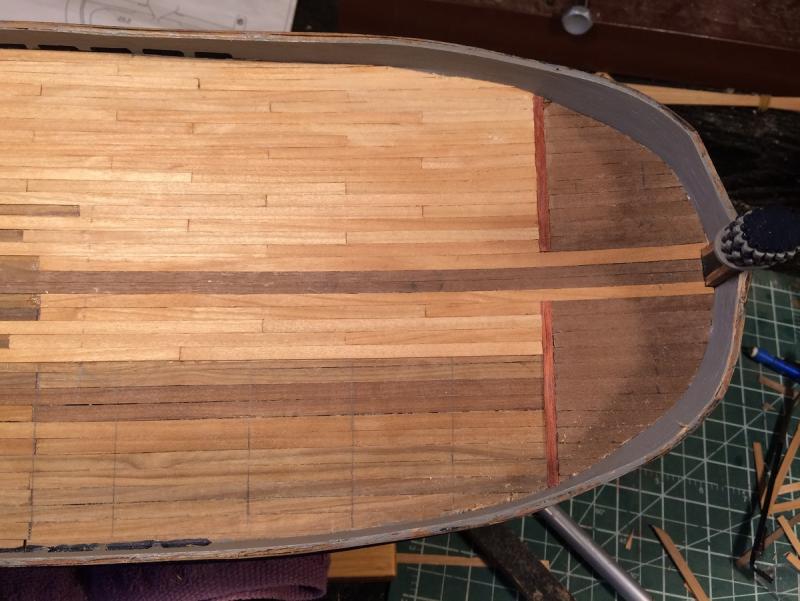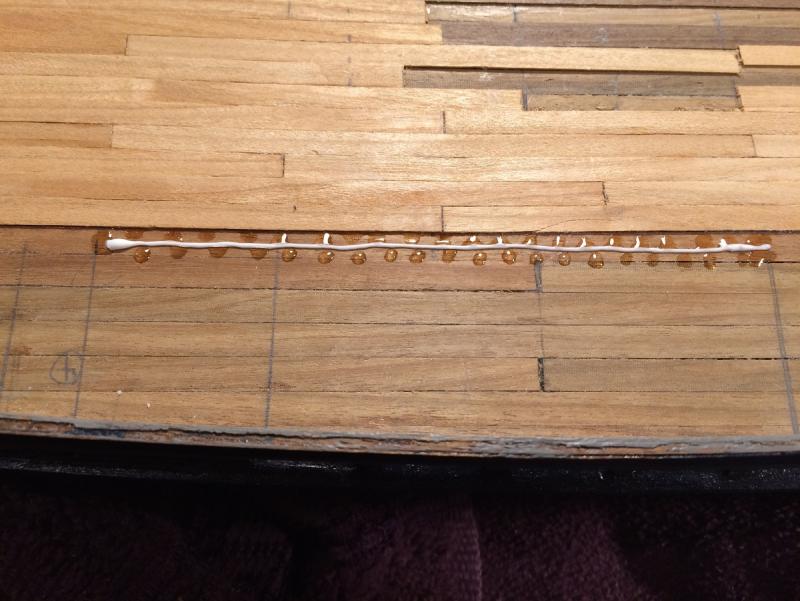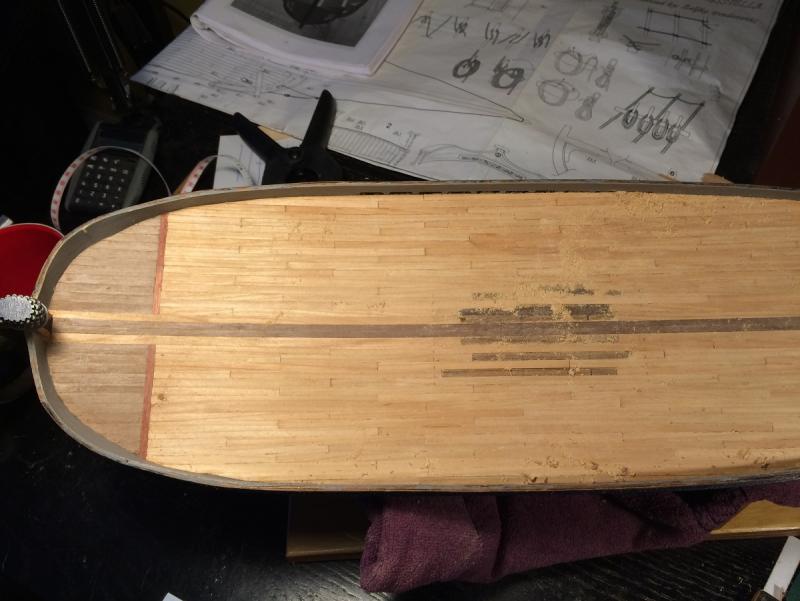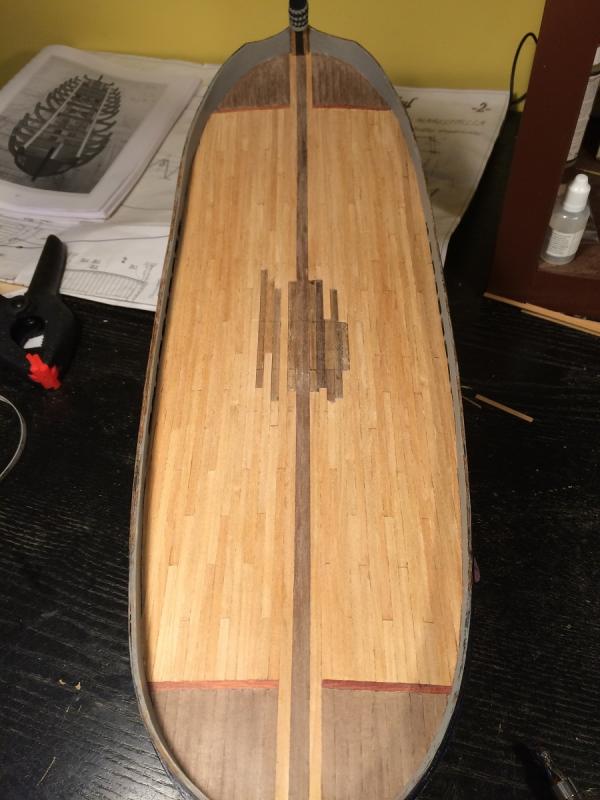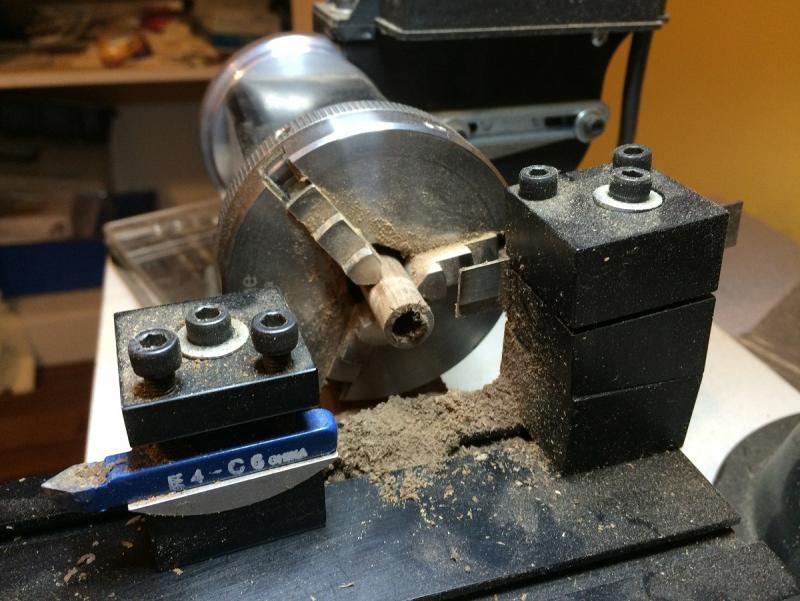
donrobinson
Members-
Posts
1,909 -
Joined
-
Last visited
Content Type
Profiles
Forums
Gallery
Events
Everything posted by donrobinson
-
I like your thoughts Ian, maybe a cool one is in order. Thanks for stopping in
- 653 replies
-
- trabakul
- marisstella
-
(and 1 more)
Tagged with:
-
Thanks E.J., you said it so well and it's so true
- 653 replies
-
- trabakul
- marisstella
-
(and 1 more)
Tagged with:
-
Thanks you all for your visits and comments it is really appreciated Well it's been a long time since my last update. After many hours on pondering as how to approach the deck planking I decided to go with Zoran's(MarisStella) approach. The biggest reason being is that there is a central 17 mm wide plank that goes down the middle it would cover up any mast holes, pawl holes and one of the hatch holes. So I decided to plank the deck first and do the cutting out later. Planking went real good, I changed it a little by putting walnut at the bow and stern a blood wood plank then the cherry planks. I went with a four plank rotation, a big thanks goes to Ulises Victoria for his great tutorial on how to plank a deck http://modelshipworldforum.com/resources/Framing_and_Planking/Deck_PlankingIIbuttshifts.pdf. It was a lot of work and many hours but it is finally finished, scraped and sanded. She is approximately 175 mm x 520 mm at the largest points and took about 220 planks to cover it. Next I will cut out the main hatch then install the central strip followed by the remaining holes required. I am really looking forward when all forms of planking are done Enjoy the pics Take Care
- 653 replies
-
- trabakul
- marisstella
-
(and 1 more)
Tagged with:
-
Hey Mike, Thanks. It is a good machine, the zero turn. I do find myself going back to my lawn tractor on some hot summer days and I want a cold beer, as with the zero turn it's impossible to have a beer and steer at the same time
- 62 replies
-
- batelina
- marisstella
-
(and 1 more)
Tagged with:
-
Thanks Pierre, it is a fine little kit and I'm sure you will be happy with it. It gives you a little taste of everything in modelling,except rigging, and will defiantly help in any further models you are thinking of building. I hope you enjoy her and I'll be watching for your build log.
- 62 replies
-
- batelina
- marisstella
-
(and 1 more)
Tagged with:
-
We'll be looking forward to seeing your progress
- 36 replies
-
- artesania latina
- king of the mississippi
-
(and 1 more)
Tagged with:
-
Jack things are looking real good. I like the idea of your bow and stern clamps, something I will have to remember. When planking I use a combination of ca and pva glue. The ca acts as a clamp and the pva for the bond, works quite well. Keep up the good work
- 174 replies
-
- gaeta falcata
- marisstella
-
(and 1 more)
Tagged with:
-
Looking good Ian, You will be real happy with the filler blocks, they make the planking and especially the sanding so much easier. Good catch with the markings, you will learn(if you haven't already) to really trust in the plans a skill I am still having a problem with . Nice work and have a good holiday.
- 107 replies
-
- brazzera
- marisstella
-
(and 1 more)
Tagged with:
-
Hi Lawrence and Thanks. The lathe is really nice to have even though I don't use it to it's full capabilities yet. As far as being justifiable, mine has not reached that point, but when I retired I had a one time time chance to buy my tools and I went for it. So the bank may be able to take my house but the tools are mine!!!
- 653 replies
-
- trabakul
- marisstella
-
(and 1 more)
Tagged with:
-
looking forward to seeing your hot air soldering station, I have been looking also, it seems a lot of them are 220v. Have you thought of maybe making a jig to hold the funnels in your lathe, then using a good sized rest for your hand turn on lathe and paint the entire funnel that way. I think you should have no problem "cutting" around the brass bands that way. Several thin coats(at a slow speed ) should provide you with a very acceptable smooth finish leaving the brass bands untouched.
- 749 replies
-
- albertic
- ocean liner
-
(and 2 more)
Tagged with:
-
The rats look great E.J. Good luck with the move. My stuff still fits in the back of a truck...........only difference is the truck now has 18 wheels instead of 4.
- 608 replies
-
- la couronne
- corel
-
(and 1 more)
Tagged with:
-
Thanks so much for the tutorial Zoran, this makes things much clearer, I have been away from here for awhile and just noticed this. I will try your methods and keep everyone posted. I will join you with the coffee, I have just completed an extra long birthday celebration so a beer is not really sounding that good yet
- 653 replies
-
- trabakul
- marisstella
-
(and 1 more)
Tagged with:
-
I think you should be ok, if you find them breaking I would just harden them with some ca and that should solve your problems
- 653 replies
-
- trabakul
- marisstella
-
(and 1 more)
Tagged with:
-
Hi Mike, thanks for stopping in. To answer your questions the dowel is 12 mm in diameter, the hole is 8.5 mm(21/64)( I did drill a smaller pilot hole first) the side walls are 1.75 mm thick and the piece sits 2.5 mm high. The tool I used to part them with is a parting tool, there are some pictures of it already but this one maybe shows a better angle of it(it is the unit on the right)
- 653 replies
-
- trabakul
- marisstella
-
(and 1 more)
Tagged with:
About us
Modelshipworld - Advancing Ship Modeling through Research
SSL Secured
Your security is important for us so this Website is SSL-Secured
NRG Mailing Address
Nautical Research Guild
237 South Lincoln Street
Westmont IL, 60559-1917
Model Ship World ® and the MSW logo are Registered Trademarks, and belong to the Nautical Research Guild (United States Patent and Trademark Office: No. 6,929,264 & No. 6,929,274, registered Dec. 20, 2022)
Helpful Links
About the NRG
If you enjoy building ship models that are historically accurate as well as beautiful, then The Nautical Research Guild (NRG) is just right for you.
The Guild is a non-profit educational organization whose mission is to “Advance Ship Modeling Through Research”. We provide support to our members in their efforts to raise the quality of their model ships.
The Nautical Research Guild has published our world-renowned quarterly magazine, The Nautical Research Journal, since 1955. The pages of the Journal are full of articles by accomplished ship modelers who show you how they create those exquisite details on their models, and by maritime historians who show you the correct details to build. The Journal is available in both print and digital editions. Go to the NRG web site (www.thenrg.org) to download a complimentary digital copy of the Journal. The NRG also publishes plan sets, books and compilations of back issues of the Journal and the former Ships in Scale and Model Ship Builder magazines.


